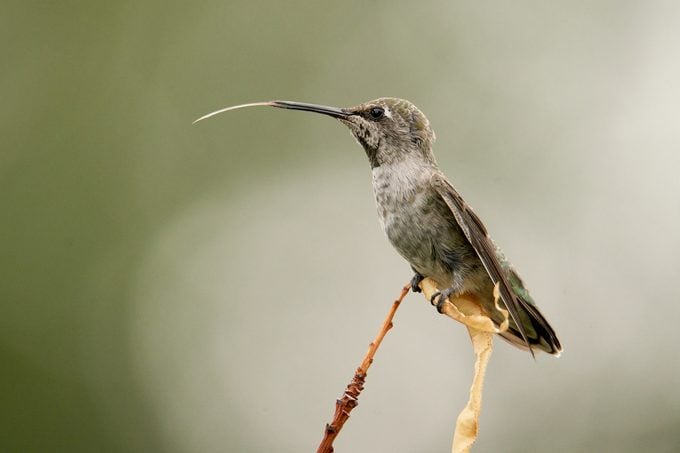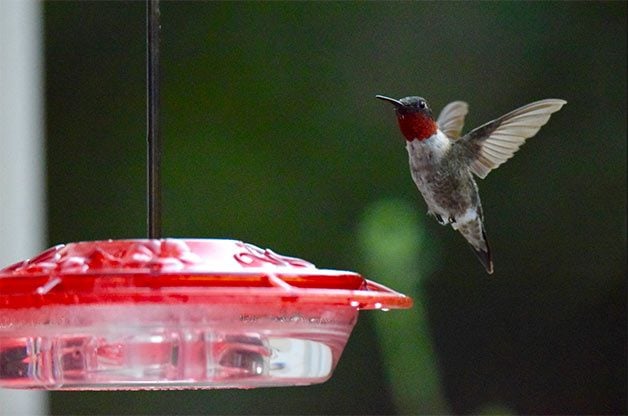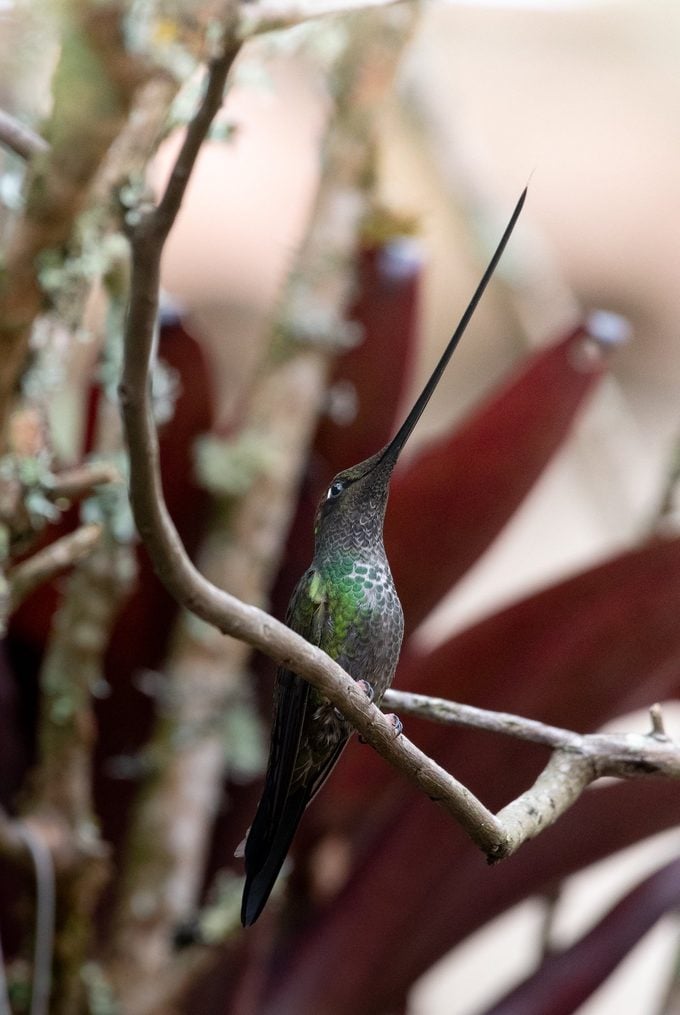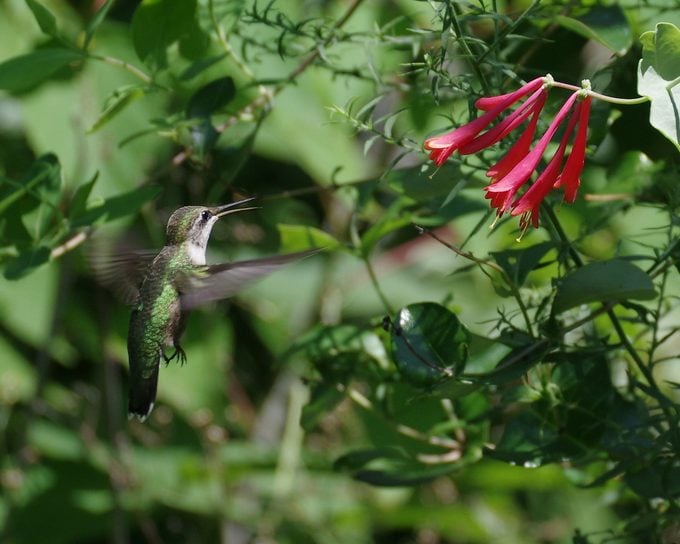How Do Hummingbirds Use Their Tongues and Beaks?
Updated: Apr. 18, 2022
Scientists tried for years to understand how a hummingbird tongue and beak works. Discover the fascinating ways these tiny fliers use their tongues and beaks.
Our editors and experts handpick every product we feature. We may earn a commission from your purchases.
How Does a Hummingbird Eat With a Long Tongue and Beak?

A casual observation might suggest that hummingbirds use their long, thin, dainty beaks like straws. However, beginning early in the 19th century, scientists realized the tip of a hummingbird’s tongue forks into two tiny tubes. So they postulated the birds must drink nectar through capillary action. This is the same mechanism that allows a towel to draw in water. Turns out, the scientists were wrong—for well more than a century.
Discover the truth about common hummingbird myths.
Only in recent years have scientists figured out how a hummingbird laps up nectar with its long, slender tongue. Inquisitive scientists and high-speed motion photography finally cracked the code in 2011. Researchers Margaret Rubega and Alejandro Rico-Guevara discovered that hummingbirds feed via a pistonlike method. They lap up nectar with their tongues. The tiny forks at the tip spring open to gather fluid. Then the tongue retracts as the bill squeezes shut, compressing the tongue and allowing the bird to lap up the nectar. They repeat this high-speed lapping 15 to 20 times per second.
How fast do hummingbirds fly and flap their wings?
Hummingbirds Reach Sugar Water With Long Tongues

“Can hummingbirds reach far enough down to get sugar water from half full saucer feeders?” asks Birds & Blooms reader Cindee Darden of Marietta, Georgia.
Kenn and Kimberly Kaufman: Yes, they can. We often recommend the saucer style of hummingbird feeders. They’re easier to clean than some other types, and with the level of the sugar water far below the opening in the top, insects like bees can’t reach it. But hummingbirds can reach it with no problem. In addition to their long, narrow beaks, they also have long tongues that can extend far out beyond the tip of the beak. In this way they have access to the nectar deep inside long, tubular flowers. They also can reach far down into the saucer of a feeder.
Do hummingbirds mate for life?
A variety of other birds are also drawn to sugar water, including woodpeckers, orioles, tanagers, warblers and vireos. Watching them try to perch on hummingbird feeders in a manner that allows them to slide their tongue into the ports can be entertaining. Such visitors are rarely more than an inconvenience to the hummingbirds.
Where do hummingbirds sleep at night?
A Hummingbird Beak is Perfect for Pollination

Beak (bill) lengths and shapes vary dramatically throughout the hummingbird world. Some species coevolved with specific flowers that provide their primary nectar sources. Many hummingbirds have bills specifically adapted to fit certain flower species. Studies in the evolutionary relationship between pollinators, such as hummingbirds and bees, and flowers that need to be pollinated, continue to provide amazing insights.
One such research project, headed by Lena Hileman at the University of Kansas, revealed that the flowers of various penstemon species show either bee or hummingbird adaptation. Species that are adapted to bee pollination are generally bluish or purplish, with a flower tube of sufficient diameter to allow bees to enter and a stamen positioned to deposit pollen on the backs of bees. Conversely, species adapted for pollination by hummingbirds are red or orange-red with narrow openings to allow only the hummingbird’s bill and/or tongue to enter. They don’t need to offer a landing pad.
If you’ve ever wondered, this is how much hummingbirds weigh.
All this coevolution has led to some truly bizarre flowers but also to some hummingbirds with extraordinary bills. Among the most idiosyncratic is the sword-billed hummingbird, native to Andean South America. This bird’s daggerlike bill is nearly as long as its entire body, stretching to almost 4 inches. This long bill allows the sword-billed hummer to feed on long-tubed flowers whose nectar is inaccessible to other species, especially the beautiful pink blooms of northern banana passionflower.
Meet the world’s largest and smallest hummingbirds.
Can Hummingbirds Open Their Beaks?

Another enduring mystery is how they catch insects, which make up a significant and important part of their diets. Again, relying on high-speed frame-by-frame photography, researchers learned that hummers can flex their lower bill downward to get it out of the way and widen the base. Then they snap the bill closed at blinding speed. Combined with their aerial agility, this adaptation for catching insects on the wing allows hummingbirds to obtain life-sustaining protein, fat, amino acids, and other important nutrients.
Discover more jaw-dropping facts about hummingbirds.
To learn more, check out The Hummingbird Handbook: Everything You Need to Know About These Fascinating Birds, published by Timber Press.




















